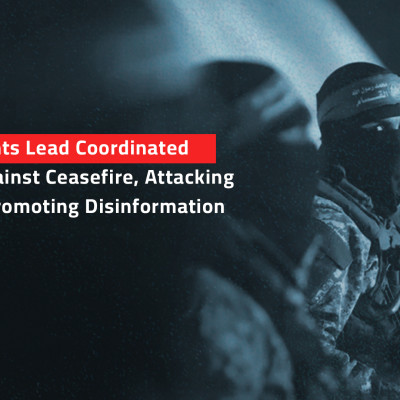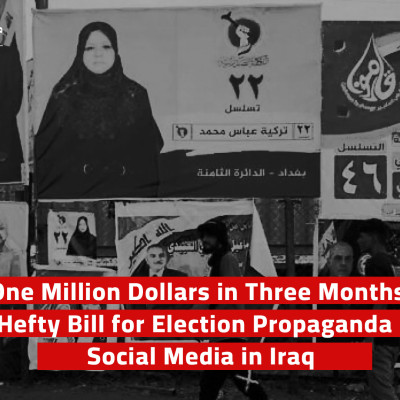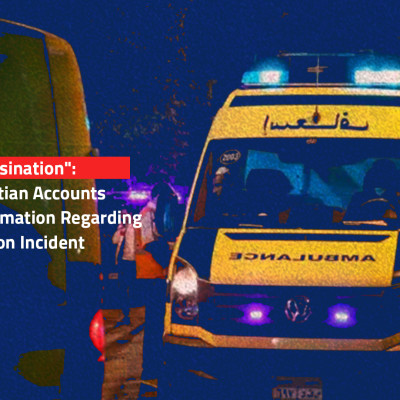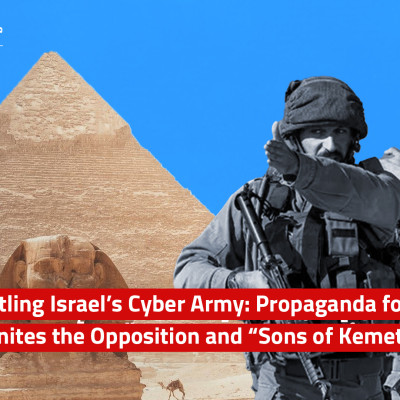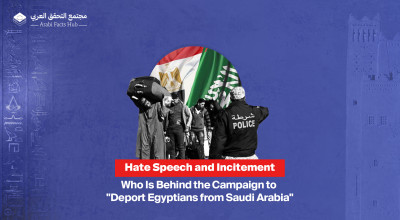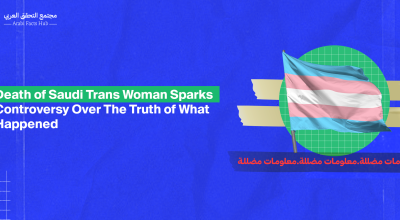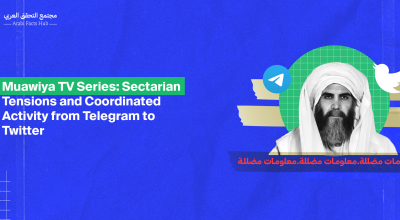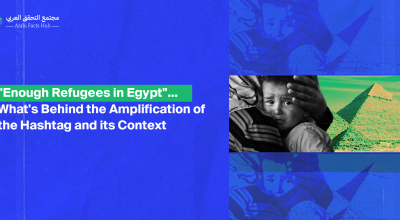“#AlJulani_Syria's_Butcher”: Who is Behind the Most Trending Hashtag on X?
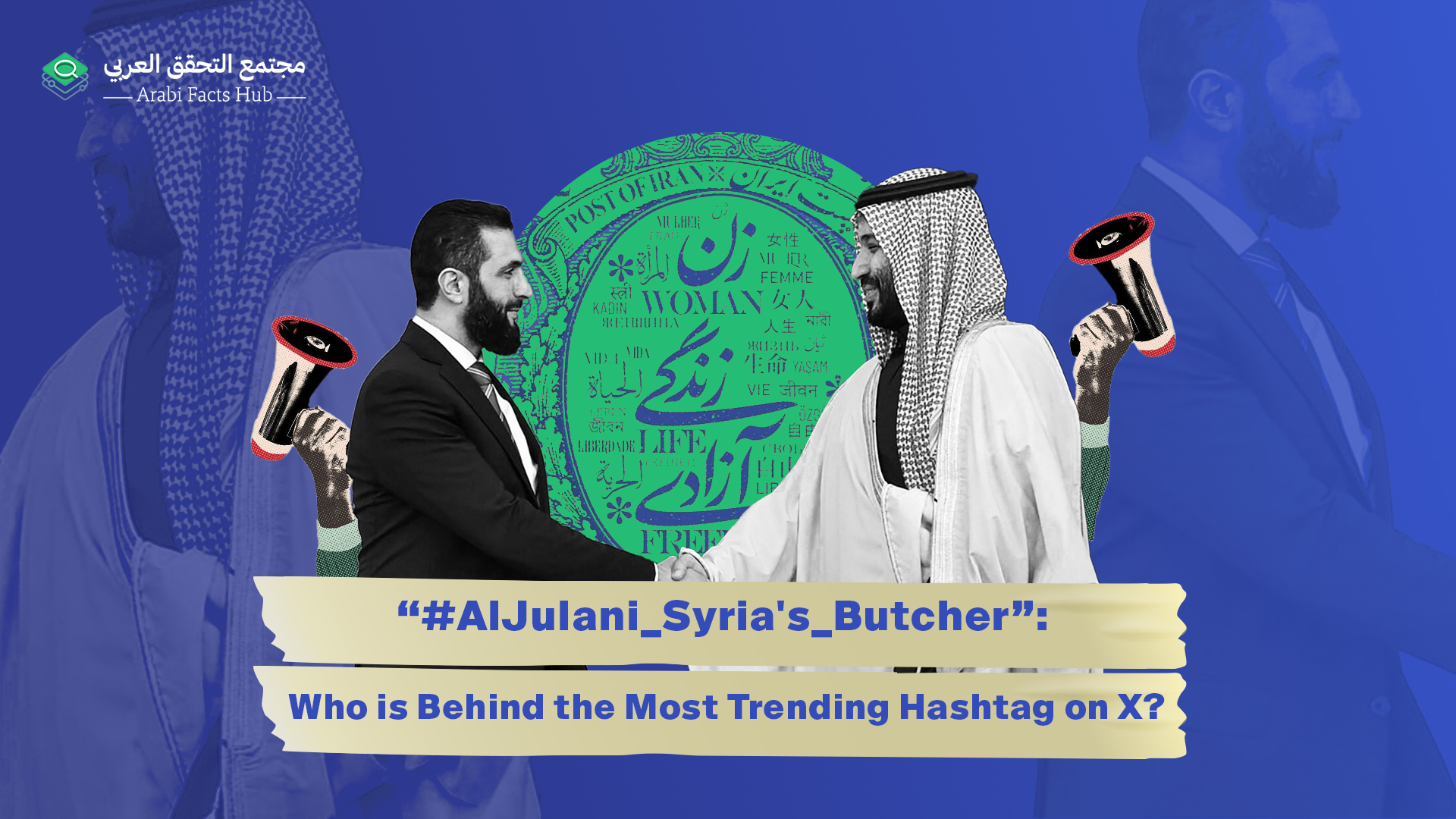
Coinciding with the visit of Syrian transitional president Ahmad al-Sharaa to Saudi Arabia and tensions along the Syrian-Lebanese border, activity surged again on the hashtag #الجولاني_سفاح_سوريا (Al Julani, Syria’s Butcher). This spike in activity was driven by accounts linked to Iran, as well as others claiming connections to the Alawite sect in Syria.
The hashtag "#الجولاني_سفاح_سوريا" (Al Julani, Syria’s Butcher) took the spotlight again in parallel with the visit of Syrian transitional president Ahmad al-Sharaa to Saudi Arabia on February 2, 2025, and the escalation of armed clashes along the Syrian-Lebanese border on February 7 of the same month.
Clashes erupted between the Syrian General Security forces and armed militants from Lebanese tribes in the Syrian town of Hawik, near the Lebanese border. This resulted in at least two Lebanese casualties and mutual kidnappings between the two sides.
The hashtag "#الجولاني_سفاح_سوريا" has been the most frequently used since the fall of Syrian president Bashar al-Assad’s regime. It has topped the trending list on X in every campaign in several Arab countries, including Syria and Iraq.
An analysis of the hashtag data suggests that accounts claiming to represent the Alawite sect in Syria and others with close ties to Iran are behind the launch and repeated resurgence of the hashtag, especially during al-Sharaa's visit to Saudi Arabia.
Arabi Facts Hub has observed that this campaign was not just a spontaneous wave of interaction, but followed artificial amplification dynamics via organized networks of digital accounts, which played a crucial role in resharing content and significantly increasing the hashtag's spread in a short period.
Launch and then rapid spread
Data showed that the hashtag "#الجولاني_سفاح_سوريا" (Al Julani, Syria’s Butcher) achieved high engagement rates in the first hours of its launch on February 2nd, topping the list of the most trending hashtags in several Arab countries, including Saudi Arabia, Iraq, and Syria.
”
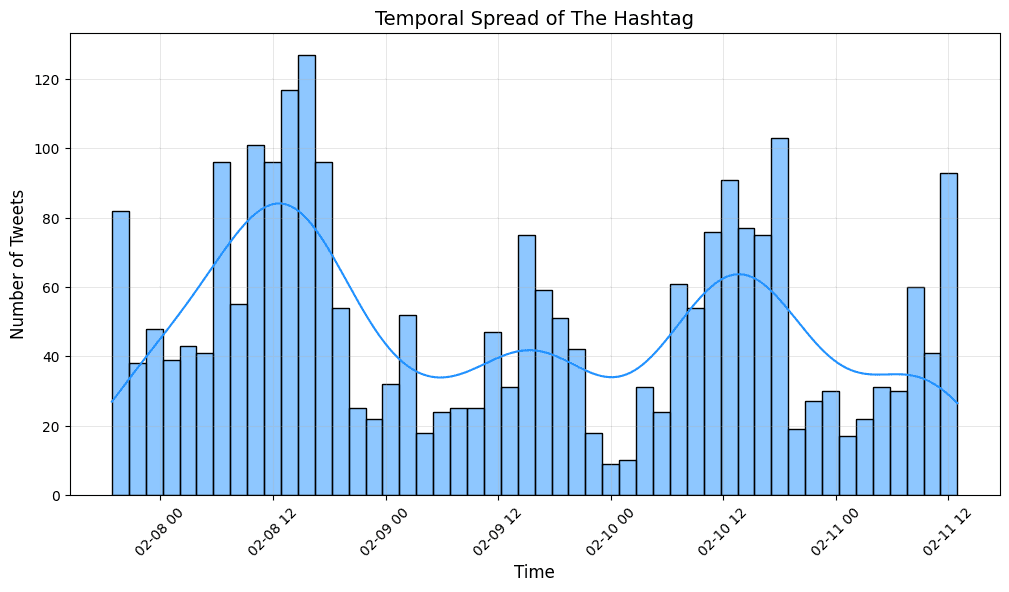
Data showed that the hashtag "#الجولاني_سفاح_سوريا" (Al Julani, Syria’s Butcher) saw high engagement rates in the first hours of its launch on February 2nd, quickly becoming one of the most trending hashtags in several Arab countries, including Saudi Arabia, Iraq, and Syria.
Digital analysis shows a sudden spike in posting and reposting activity within the first two hours, indicating a coordinated effort to amplify reach in record time. This push led the hashtag to peak in popularity by February 4th, with sustained momentum lasting until February 8th. Over the past month, the hashtag recorded approximately 37,000 interactions—a 589% increase compared to the previous month.
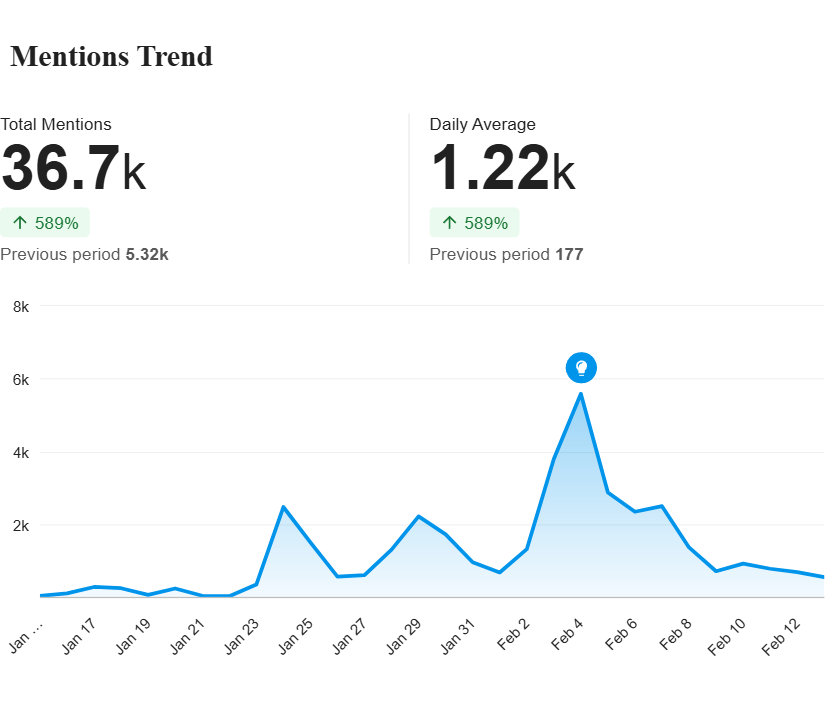
Engagement with the hashtag was concentrated in a limited number of countries, with the highest interaction rates recorded in Saudi Arabia, Iraq, Syria, and Lebanon.
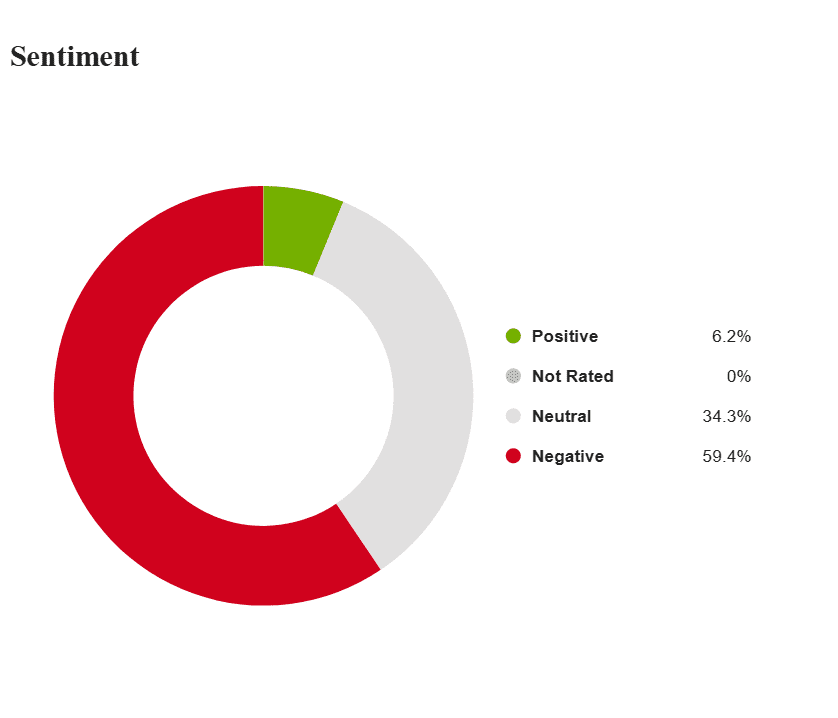
The data indicates that approximately 23,426 posts within the campaign had an explicitly negative tone, more than double the number of neutral posts (11,366) and significantly higher than the positive content, which accounted for only 1,988 posts.
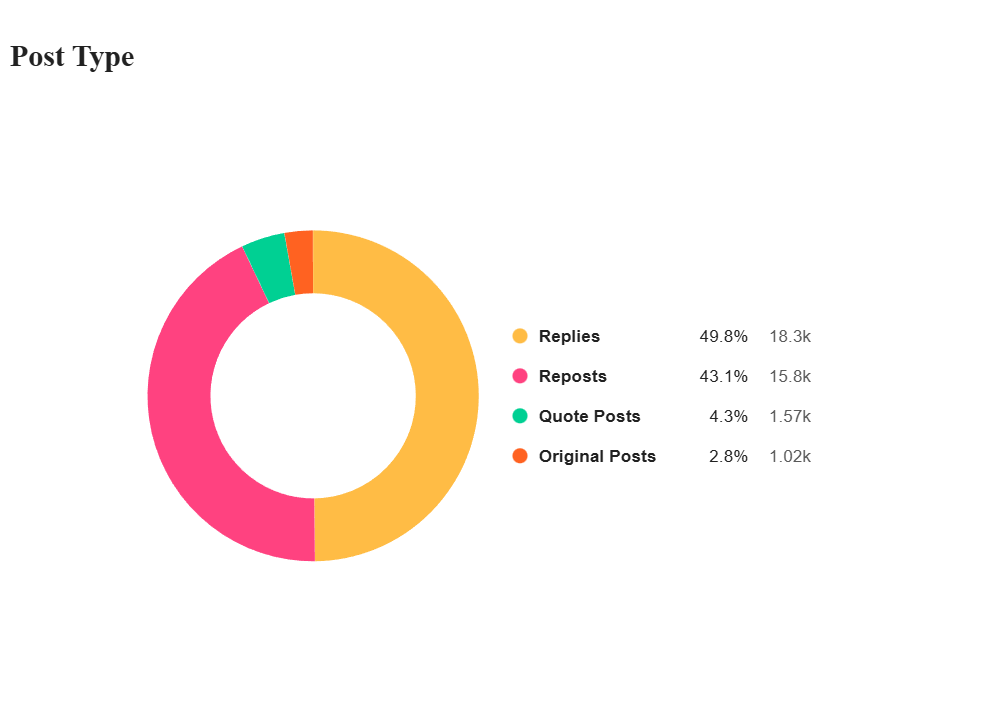
Statistical analysis of over 25,000 keywords within the campaign reveals that the vast majority fall under the negative classification, with systematic repetition of terms such as "terrorism" (521 times), "jihadist regime" (520 times), "genocide" (441 times), and "collective punishment" (436 times).
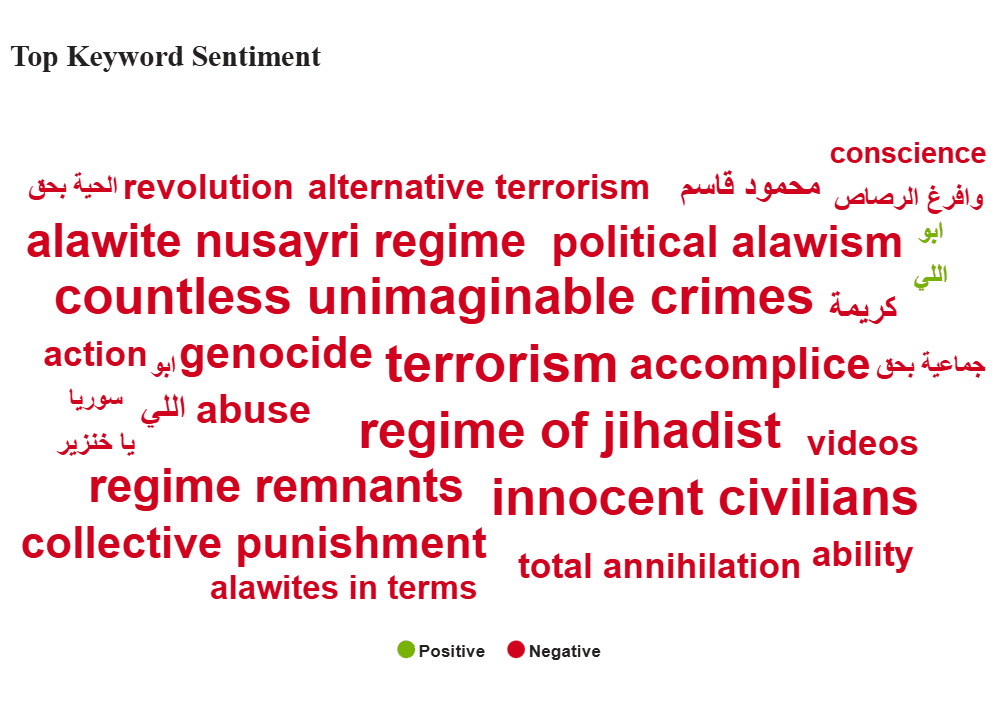
The campaign generated a total of 18,399 replies, an exceptionally high number that reflects a strategy of content flooding. Replies were used intensively to steer discussions toward specific negative narratives. This technique is common in coordinated digital campaigns, aiming to create a false impression of widespread consensus on a particular issue, even when the engagement is artificially driven rather than stemming from genuine user discussions.
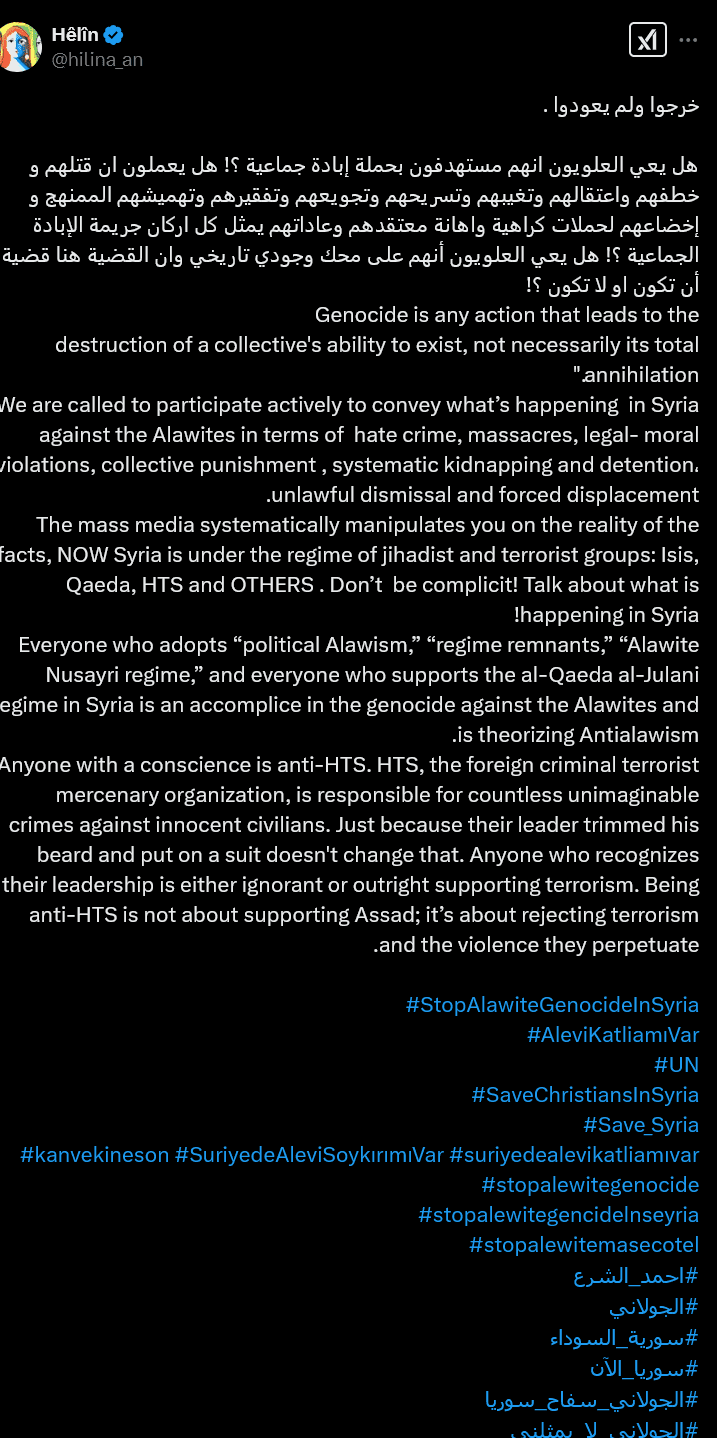
Additionally, the campaign saw 15,818 retweets, highlighting the role of closed networks in amplifying its reach. Instead of generating new content, the campaign primarily relied on recycling the same material through repeated sharing.
In contrast, the number of original posts was relatively low, with only 1,025 unique posts. This indicates a lack of genuine engagement and suggests that the campaign was driven more by artificial amplification than by organic content creation.
Artificial Amplification and Closed Coordination Networks
A timeline analysis of the hashtag's activity revealed that it did not follow the typical organic growth pattern seen in human-driven trends. Instead, there was a rapid surge in posts from specific accounts that played a key role in amplifying the hashtag. This suggests the use of aggressive posting tactics to propel the hashtag into trending lists at an unnatural speed.
”
The timeline analysis of the hashtag's activity revealed that it did not follow the typical organic growth pattern seen in human-driven trends. Instead, there was a rapid surge in posts from specific accounts that played a key role in amplifying the hashtag, suggesting the use of intensive posting tactics to push it into trending lists at an unnatural speed.
Data indicates that the first post using the hashtag was published by the account @hilina_an at 5:18 AM Syria time. Within the first six hours, a group of accounts emerged as early adopters of the hashtag and significantly contributed to its amplification. Among them were accounts such as “سوريا العلمانية” (Secular Syria), “العراقي الجنوبي” (Southern Iraqi), @ali_abbass_h01, and @nisology1919. These accounts repeatedly reposted the same content with short intervals between each wave of posting, reinforcing the impression of coordinated activity.
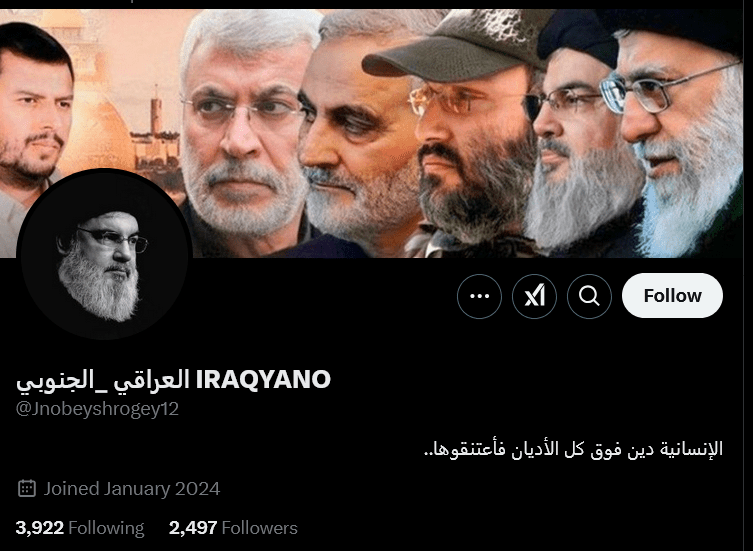
Tracking the timeline of the hashtag revealed that the account @hilina_an did not just launch the trend but was also the most active in spreading it during the initial hours. This account posted seven tweets that were retweeted 68, highlighting its major role in amplification.
Coming in second, the account “Secular Syria” posted three tweets, garnering 42 retweets—a high engagement rate considering the limited number of original posts. Meanwhile, the account “Southern Iraqi” posted only twice but still managed to receive 12 retweets.
Certain accounts posted identical content or retweeted similar posts within short time frames. For example, at 3:20 AM on February 5, 2025, there was a sudden spike in hashtag activity as key accounts published nearly identical content simultaneously.
A clear pattern of content repetition emerged, with accounts like “D_79797979797” and “Maya Haddad” making their only posts within minutes of each other. Similarly, accounts such as “Lora Pacific 4846” and “Yuiolh” displayed synchronized posting behavior, repeatedly amplifying the same content through intensive retweeting. This suggests a coordinated effort aimed at artificially boosting the visibility of negative messages associated with the campaign.
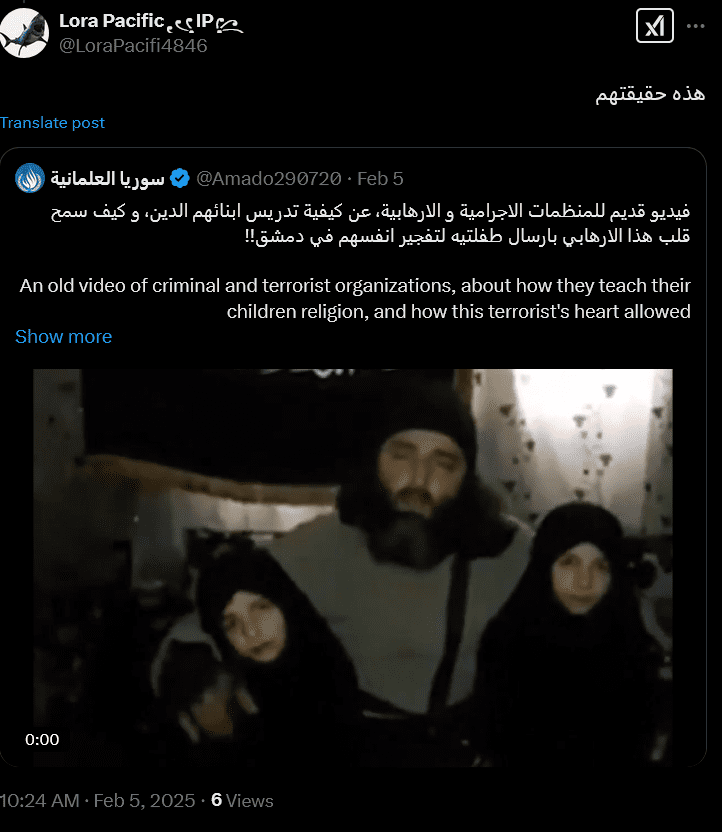
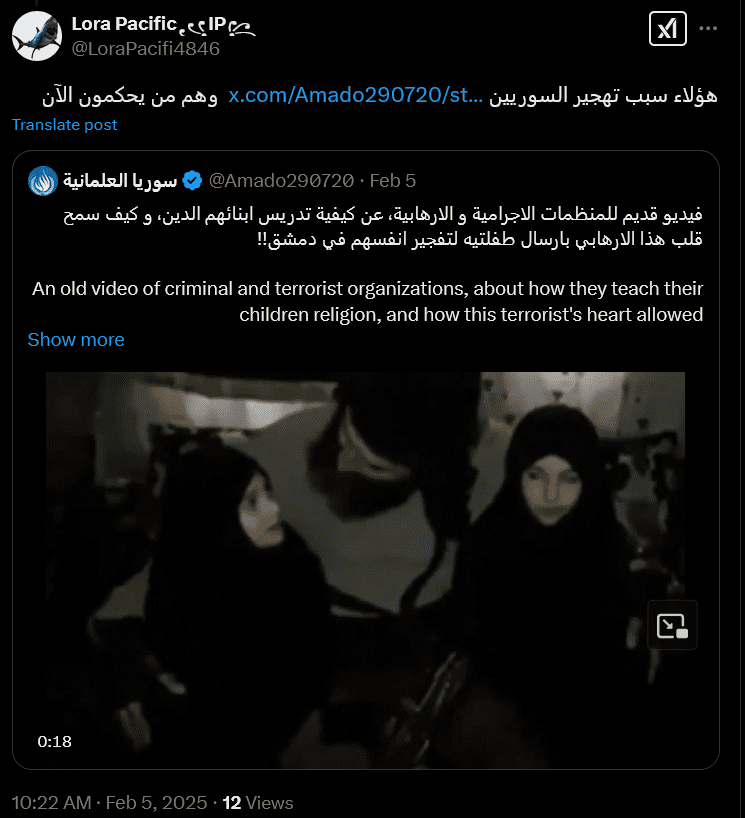
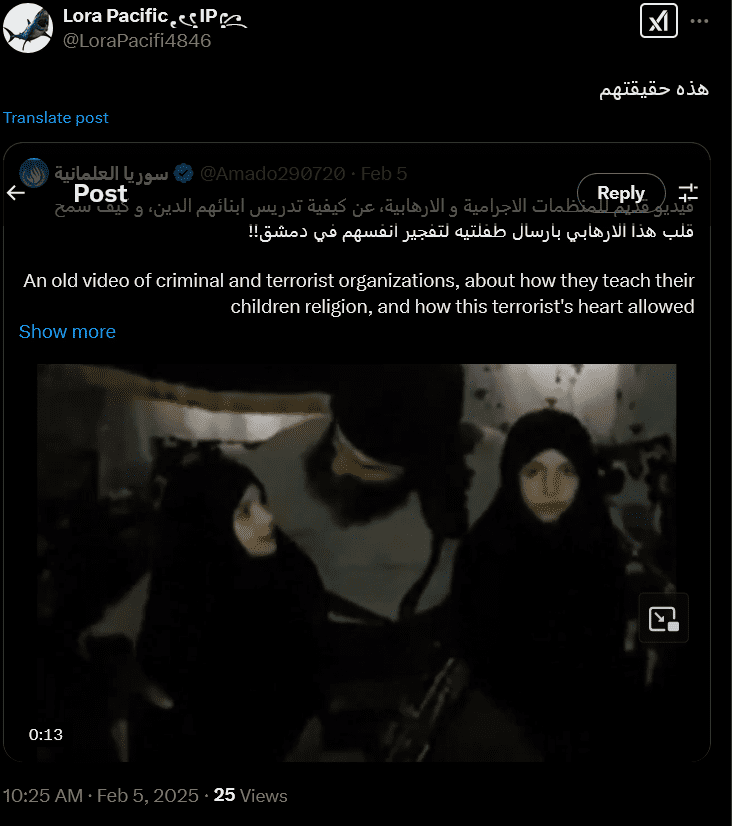
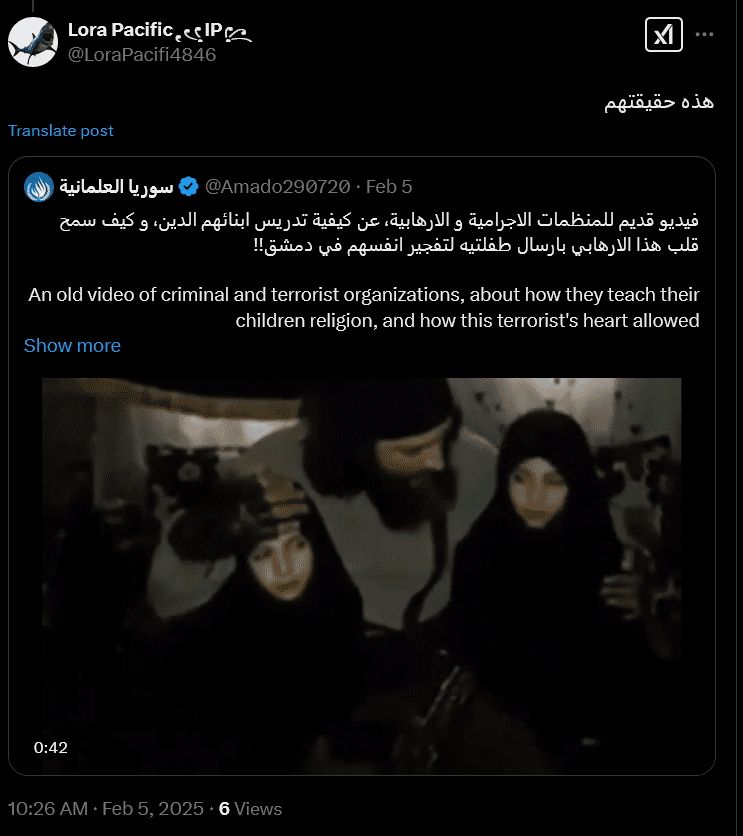
In addition to the amplification patterns revealed by the timing of posts, we applied a methodology of network analysis to uncover the internal structure of interactions with the hashtag “#الجولاني_سفاح_سوريا” (Al Julani, Syria’s Butcher) and to understand the nature of relationships between the accounts engaging with it. A network analysis focuses on studying the connections between accounts through retweets, direct mentions, and repeated interactions, allowing us to identify the most influential accounts within the network. It also helps determine whether the spread was organic or coordinated through a closed network aimed at amplifying targeted messages.
The network analysis of this hashtag revealed that the spread was not naturally distributed among users, but rather concentrated around a limited number of accounts that played a pivotal role in disseminating and amplifying the content.
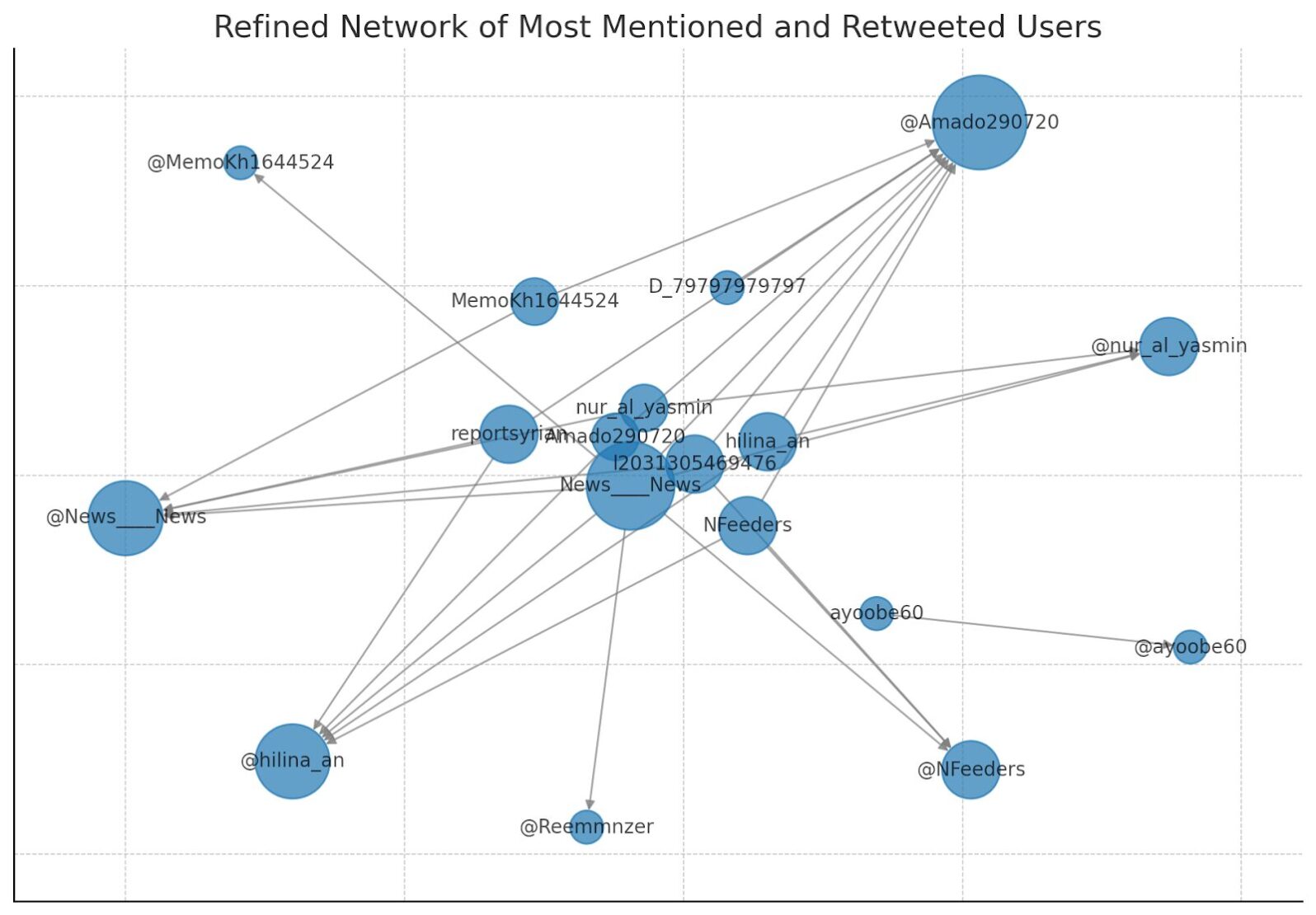
“Secular Syria” was the most influential account within the network, as the analysis showed it was a central point for interaction, receiving a high number of direct mentions and retweets. Similarly, accounts such as "hilina_an", "News_News", and "yuiolh" experienced elevated interaction levels, even though their activity was largely confined to this campaign.
Secular Syria garnered 3,814 retweets, a notably high figure compared to its 139 posts. Likewise, the account "Syrian Knight" displayed a similar pattern, recording 32 retweets from a limited number of posts, suggesting it had a role in boosting the hashtag’s reach within the campaign’s closed network.
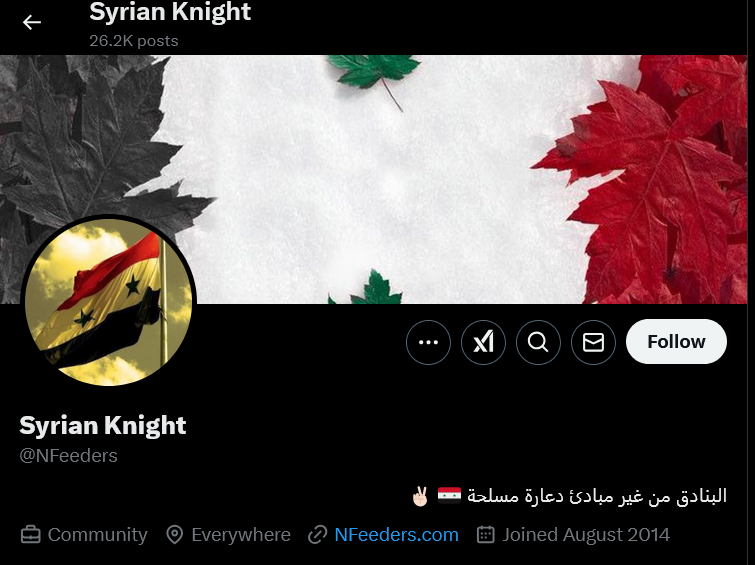
Who is behind the attack on Ahmed Al Sharaa?
The analysis of interaction data shows that most of the posts came from five main countries: Saudi Arabia, Iraq, Syria, Lebanon, and Egypt. These countries alone contributed to more than 60% of total interaction with the hashtag.
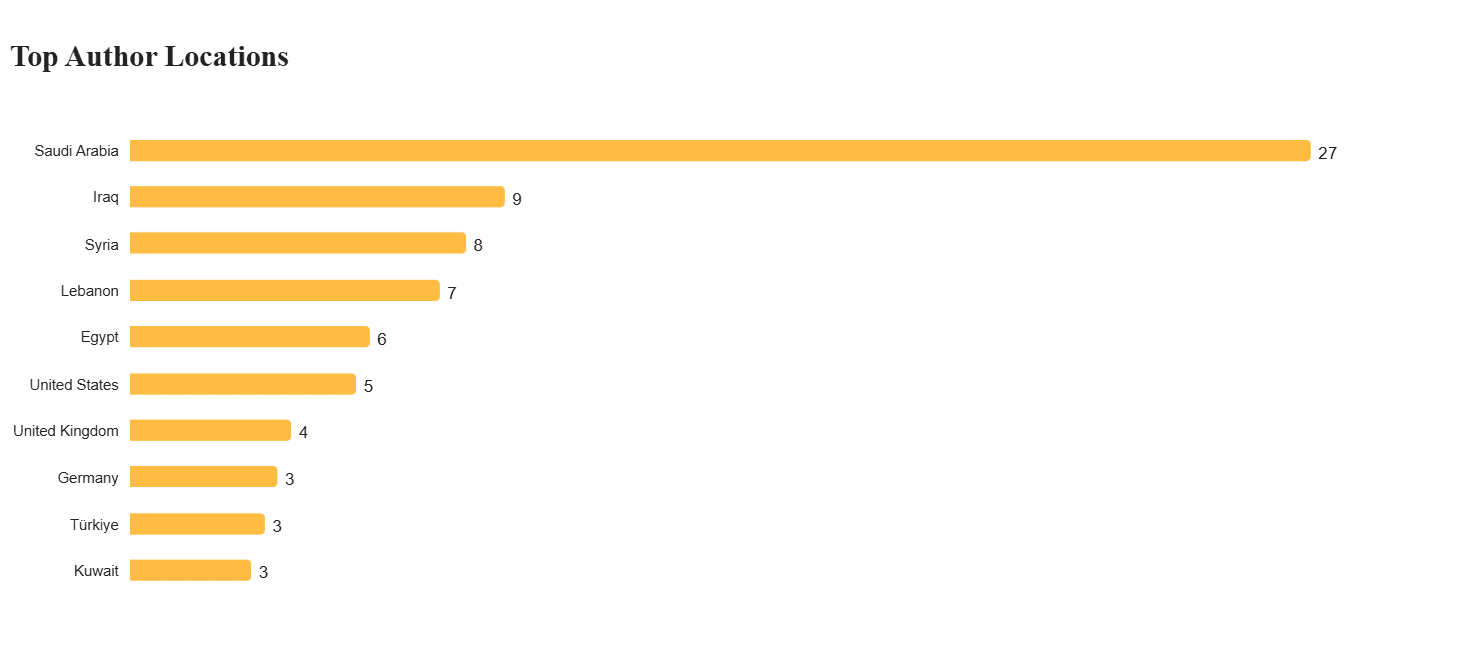
By analyzing the account “hilina_an,” which launched the recent campaign under the hashtag, we found that it claims to have an Alawite background. The rhetoric of this account clearly exhibits sectarian undertones, as it views Ahmad al-Sharaa as a direct threat to the Alawite community in Syria.
In one of its tweets, the account directly questions whether the Alawites realize they are being subjected to a “genocidal campaign,” messaging that is aimed at instilling fear and mobilizing the Alawite sect.
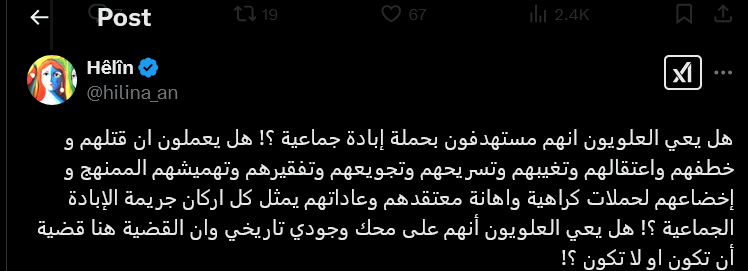
The Iraqi accounts participating in the campaign also displayed a clear alignment with Iranian media rhetoric, portraying the fall of Assad as a Western-Turkish conspiracy aimed at undermining the Axis of Resistance. Several accounts relied on symbolic images of Iranian leaders and Hezbollah figures, such as Qasem Soleimani and Hassan Nasrallah, to signal their allegiance to the same political discourse.
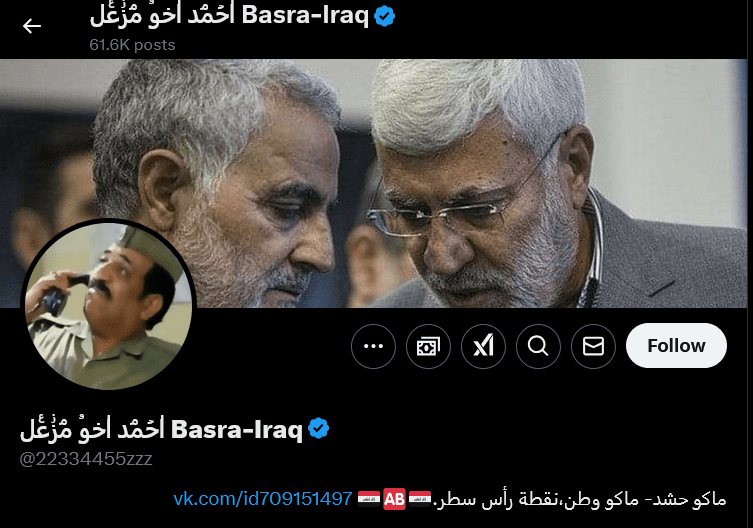
These accounts did not limit themselves to attacking Al-Sharaa, but also sought to portray the new Syrian regime as an American-Israeli tool for revamping the Middle East map. They promoted the idea that Iran was betrayed by Assad himself before his downfall, which led to Syria losing a strategic ally in the fight against Israel and the West.
